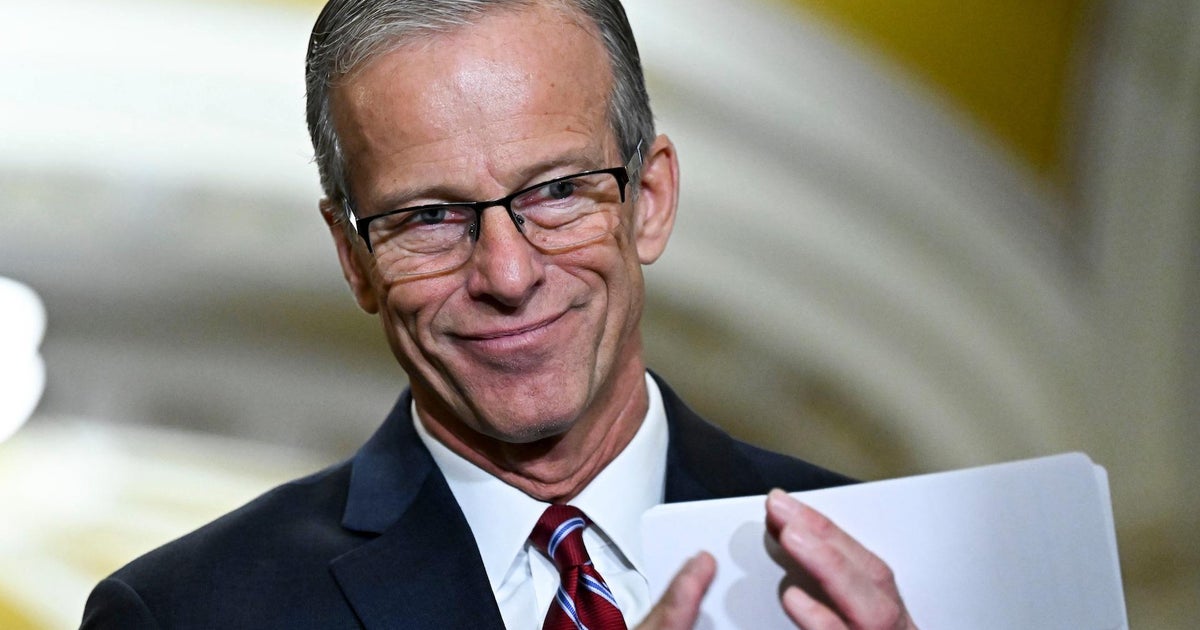Here's what's in the U.S.-China "Phase One" trade deal
The Trump administration's "Phase One" trade deal with China is expected to cool, if not definitively end, a heated dispute between the world's two largest economies that has raised costs for U.S. companies, hurt American farmers and roiled global financial markets.
U.S. Trade Representative Robert Lighthizer on Sunday told CBS News' Margaret Brennan on "Face The Nation" that the China agreement, coupled with the new United States Mexico Canada Agreement, amounts to "probably the most momentous day in trade history ever." But experts are striking a more cautious tone in assessing the longer-term impact.
"We need to see the final text to truly know the deal," Carl B. Weinberg, chief economist for High Frequency Economics, told investors in a report. Here's what we know about the preliminary trade pact between the U.S. and China.
Some tariffs cut or postponed
Of the roughly $500 billion in goods the U.S. imports from China every year, some $370 billion are currently subject to tariffs.
Last week's deal averts further U.S. levies on an additional $160 billion in Chinese imports that were set to take effect on Sunday — a relief for companies that pay the import tax. It also means American consumers are unlikely to see price hikes for a swath of consumer goods including mobile phones, video game consoles and computer monitors — at least for now.
U.S. tariffs on another group of Chinese-made consumer products that took effect Sept. 1 also will be cut to 7.5% from 15%, according to a USTR fact sheet.
China will buy more goods from U.S. farmers
China agreed to purchase up to $200 billion in U.S. goods, including agricultural products like soybeans and pork initially touted when the agreement was first announced in October. That's expected to benefit American farmers, who have seen China greatly reduce their agricultural purchases from the U.S. during the trade war.
"China went from the second-largest market for U.S. agricultural products to the fifth-largest since the trade war began," Zippy Duvall, president of the American Farm Bureau Federation, said in a statement Friday, adding that American farmers were "eager to learn details of China's commitment."
Less clear: Just how much in U.S. farm products China will ultimately buy.
The Trump administration has said China will purchase $40 billion a year, but experts "want to see what part of the purchase commitments China considers enforceable, not a vague promise of best efforts," Brad Sester, a senior adviser at the Council on Foreign Relations, said in a tweet.
Some tech theft concerns addressed
The agreement also includes measures aimed at curbing Beijing's practice of requiring U.S. companies that do business in China to share technology with their Chinese partners, according to the USTR. China had previously agreed to that when it joined the Word Trade Organization in 2001, Georgetown Law professor Jennifer Hillman, former US and WTO trade official, has noted.
But agreement doesn't seem to address a key point of contention for the U.S. — the theft of intellectual property by Chinese companies. That long-simmering issue will have to wait for future trade negotiations, Lighthizer said when pressed on Face the Nation.
"The president came up with a plan; we've been following it for two and a half years. We are right where we hope to be — tech transfer, real commitments, IP [intellectual property], real specific commitments," Lighthizer said. "I mean, this agreement is 86 pages long of detail. Agricultural barriers removed in many cases, financial services opening, currency. This is a real structural change. Is it going to solve all the problems? No. Did we expect it to? No. Absolutely not."
Phase One and done?
Stocks have reacted tepidly to the U.S.-China trade deal. UBS economist Seth Carpenter told investors that last week's agreement will have a "smaller beneficial effect" than a total rollback of tariffs. The investment bank expects the deal to provide a modest boost for U.S. economic growth next year.
By contrast, others are skeptical that the U.S. and China will succeed in resolving more deep-seated trade disputes, raising the possibility of ongoing tension.
"The fighters have retreated to their corners and may not return to the ring. The Trump administration is calling this 'Phase One' of a trade deal with China, but there is little reason to expect a Phase Two or Three," wrote Robert Daly, director of the Kissinger Institute at the Wilson Center, a Washington think tank. "The Chinese side has already won a respite from continual American threats and appears to have done so without offering any terms it wasn't prepared to give in 2017."



